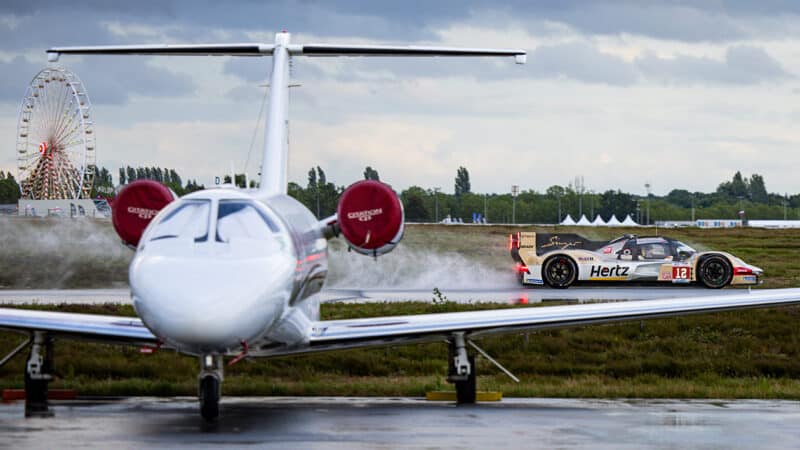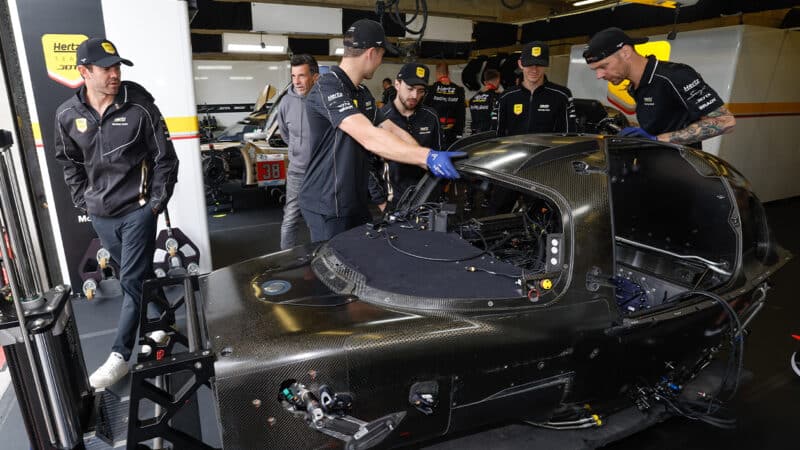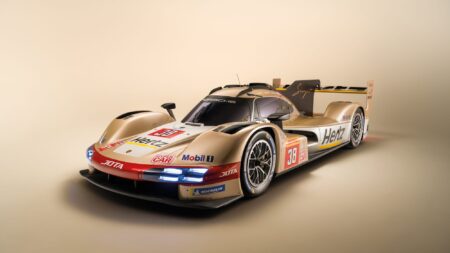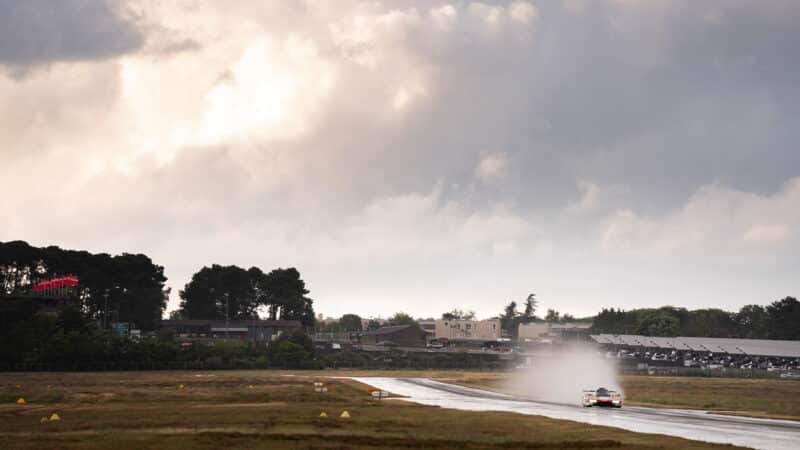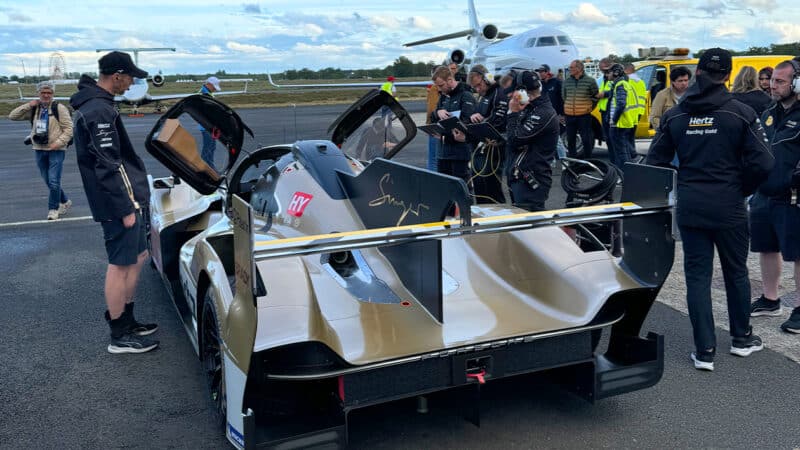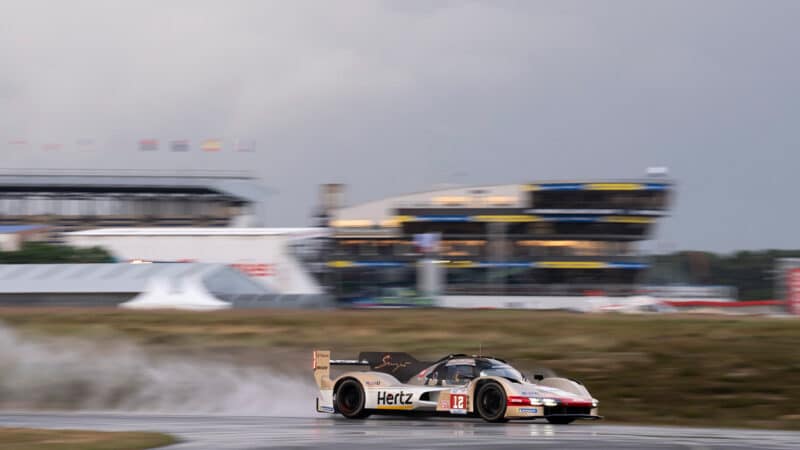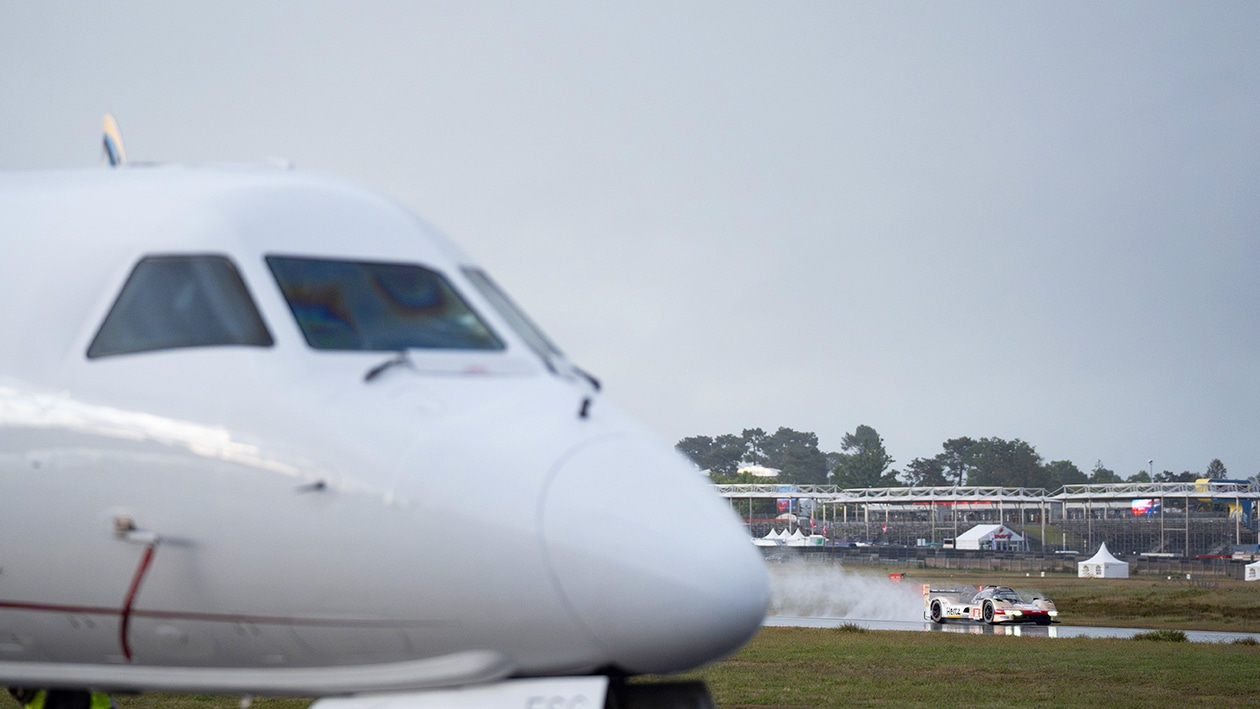With no spare monocoque, Jota had no immediate solution to its predicament. Although the Penske-run Porsche factory team, which has three cars in the race, did have a spare chassis, it wasn’t willing to give it up ahead of Thursday’s hyperpole session where cars are pushed to the limit.
“What if another accident happens and there might be a Penske car that was not racing?” said Thomas Laudenbach, vice-president of Porsche Motorsport. “Obviously we as Porsche, [with] our customer support, we really did everything and in the end we found the solution.
“We had a car for parade laps. This car was not supposed to race — I don’t think you could have raced it as it was, so it was stripped down, [Jota] took the parts needed and built up a new car: a huge effort but that was the only way to go.”
The car was located some distance from Le Mans, so Jota sent a team to strip it down and bring the monocoque back to the circuit. And that was just the start. Every other element that was due to be on the crashed car for the race had to be assembled on the new chassis.
“I was thinking beforehand that the team was in such a great place,” said David Clark, a director and founder of the team. “Maybe it was in too great a place.”
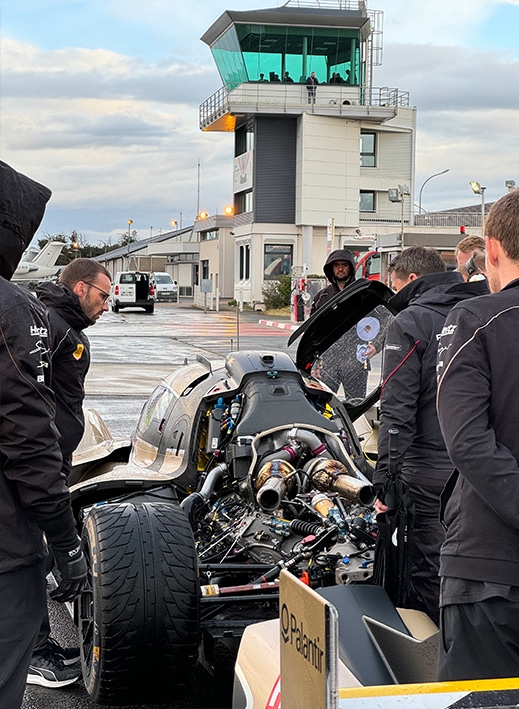
Hybrid system made rebuild complicated: but the car was ready for airport shakedown
Clark said that it never crossed his mind that the No12 car wouldn’t make the start, despite the scale of the challenge.
“The effort is so enormous and what these guys are doing is astonishing. Penske have been over and beyond in helping us.
“We could only replace the chassis. Our guys went and stripped the car, brought the chassis here on Thursday night, and then started putting it back together.
“It is a complicated car — mainly because of the hybrid system and one of the risks when you’re tired is that’s the easiest time to make mistakes.”
